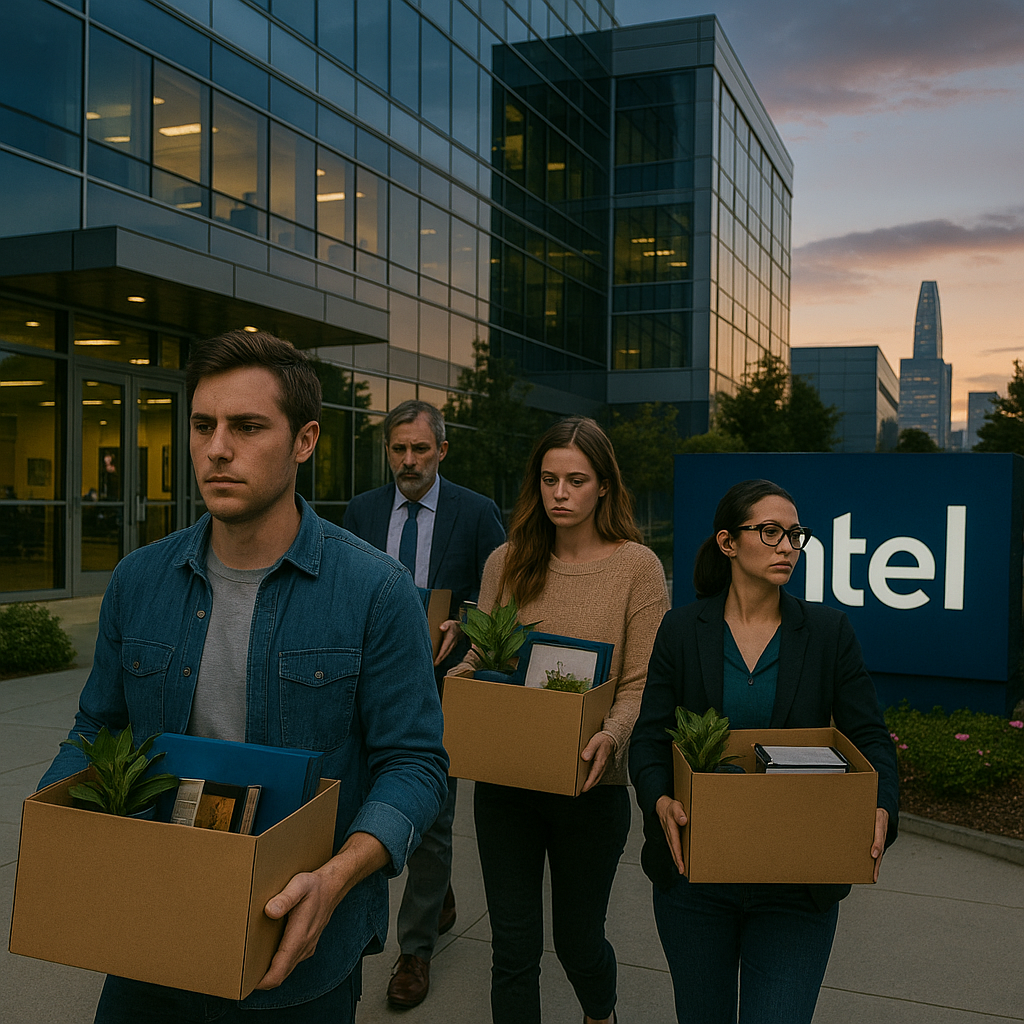Tech Layoffs Surge as AI Investments Reshape Industry

The U.S. tech industry is undergoing a seismic shift, with major players like Intel, Amazon, and Microsoft announcing layoffs totalling over 14,000 jobs this week, reported on July 19, 2025. These cuts, driven by the need to fund costly artificial intelligence (AI) infrastructure, highlight the tension between technological progress and workforce stability. As companies pivot toward AI-driven growth, the human cost of this transition is sparking debates about the future of work in Silicon Valley and beyond.
Layoff Details and Rationale
Intel disclosed plans to cut 5,500 jobs, citing the need to streamline operations amid declining chip demand and rising AI server costs. Amazon’s AWS division, despite a 17% revenue increase, laid off hundreds of employees in its cloud computing unit to reallocate resources toward AI development, including generative AI tools. Microsoft, a leader in AI through its partnership with OpenAI, reduced its workforce by 9,000, driven by escalating data centre expenses. Google, meanwhile, introduced a voluntary exit program, avoiding forced layoffs but encouraging staff to transition as it invests in projects like the Gemini 2.5 chatbot.
These layoffs reflect the immense financial demands of AI infrastructure. Building data centres and training large language models can cost billions, with xAI recently raising $10 billion in debt and equity to advance its AI research. Microsoft’s role as the Premier League’s AI partner further underscores the industry’s shift, requiring significant capital to integrate AI into diverse sectors.
Economic and Social Impact
The layoffs are reverberating through tech-heavy regions like California’s Bay Area, where local economies depend on high-paying tech jobs. A single layoff can ripple through communities, reducing spending at local businesses and straining housing markets already pressured by high costs. A 2025 study by the Economic Policy Institute estimates that each tech job loss impacts three additional jobs in related sectors, amplifying the economic fallout.
Socially, the cuts have sparked discontent. X posts from affected employees, such as @TechWorker23, describe a “crisis in HR practices,” with concerns about morale and company culture. Workers are questioning the sustainability of prioritising AI over human capital, especially as companies like Uber invest in autonomous technologies, such as a 20,000-unit robotaxi deal with Waymo. These developments suggest a long-term shift toward automation, potentially reshaping job markets.
Industry Context
The tech sector’s pivot to AI is part of a broader race for dominance. Companies like Nvidia, which reported a 60% revenue increase due to AI chip demand, are thriving, while traditional hardware firms like Intel face challenges. The contrast is stark: while Nvidia hires aggressively, others cut costs to stay competitive. This dynamic mirrors global trends, with firms like TSMC in Taiwan expanding AI chip production, highlighting the U.S.’s need to keep pace.
Real estate firms are also adapting, with some exploring lunar data centres to meet AI’s spatial demands, a concept gaining traction despite its high costs. Meanwhile, regulatory pressures are mounting, with the Federal Trade Commission probing AI’s impact on labour markets, citing potential monopolistic practices by tech giants.
Opportunities Amid Challenges
Despite the layoffs, AI investments are creating new opportunities. Roles in AI ethics, data engineering, and cybersecurity are in demand, with job postings for AI specialists up 25% year-over-year, according to LinkedIn. Retraining programs, like those offered by Coursera and Google, aim to transition laid-off workers into these fields, though critics argue these initiatives are insufficient for the scale of displacement.
Small businesses may benefit indirectly, as AI tools lower operational costs. For example, AI-driven accounting software is helping firms like those in Zambia’s $70 million growth initiative, a model U.S. startups could emulate. However, the transition requires significant upskilling, and community colleges are struggling to meet demand for AI training programs.
Future Outlook
The tech industry’s AI focus is unlikely to slow, with analysts predicting $1 trillion in global AI spending by 2030. Companies must balance investment with workforce stability to avoid long-term backlash. Policymakers are considering tax incentives for retraining, while unions are pushing for stronger labour protections. The outcome will shape whether AI becomes a net positive or a divisive force in the economy.
Conclusion
The wave of tech layoffs underscores the high stakes of the AI revolution. While companies like Intel, Amazon, and Microsoft bet on AI to drive future profits, the immediate impact on workers and communities is profound. As the industry navigates this transition, finding a balance between innovation and human welfare will be critical to sustaining public trust and economic stability.










